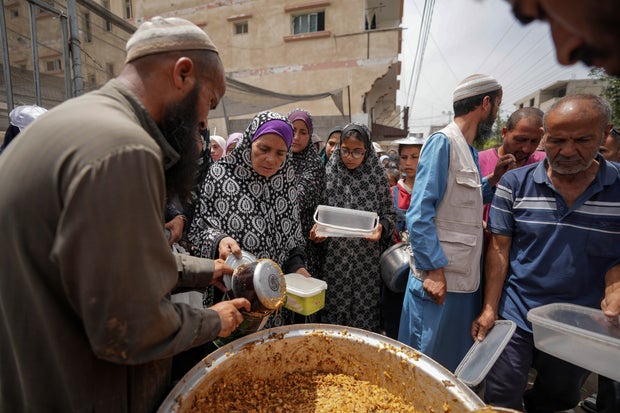Israel ordered new evacuations in the southern Gaza city of Rafah on Saturday, forcing tens of thousands of people to move as it prepares to expand its operation and adding that it is also moving into an area in northern Gaza where Hamas regrouped. More than 110,000 people have evacuated Rafah, according to the United Nations, more than doubling in recent days.
Israel has now evacuated the eastern third of Rafah, pushing the operation to the edge of the densely populated central area, although Israel’s entry into the city has so far fallen short of the full-scale invasion it planned.
The order comes in the face of strong opposition and international criticism. US President Joe Biden has already said he will not supply offensive weapons to Israel to Rafah, and on Friday the US said there was “reasonable” evidence that Israel violated international law protecting civilians in the way it conducted its war against Hamas – the strongest statement the Biden administration has ever made on the subject.
The United Nations and other agencies have warned for weeks that an Israeli attack on Rafah, which borders Egypt and is close to the main aid entry points, would paralyze humanitarian operations and cause a disastrous rise in civilian casualties.
More than 1.4 million Palestinians – half of Gaza’s population – have taken refuge in Rafah, the majority after fleeing Israeli offensives elsewhere. Considered the last refuge in the strip, evacuations are forcing people to return to the north, where areas were devastated by previous Israeli attacks.
People have been displaced several times and there are few places left in the conflict zone to move to. Those who fled the fighting earlier this week have set up new camps in the city of Khan Younis – which was partially destroyed in a previous Israeli offensive – and the city of Deir al-Balah, straining the infrastructure.
The Israeli military ordered Palestinians in the eastern part of the city of Rafah in the Gaza Strip to evacuate on Monday ahead of a long-promised ground offensive by the leaders of the Jewish state. The message was delivered through leaflets, phone calls, messages and media broadcasts in Arabic, following a weekend that brought hope for a new ceasefire within seven months. Israel-Hamas War frustrated once again.
People began to quickly flee the eastern part of Rafah on Monday., on foot or by any other means at your disposal. There were reports of Israeli airstrikes hitting eastern Rafah just hours after the evacuation order was given, but the military did not immediately confirm any new attacks on the crowded city.
Georgios Petropoulos, an official at the UN Office for the Coordination of Humanitarian Affairs in Rafah, said aid workers did not have supplies to help them settle in new locations. “We simply have no tents, no blankets, no bedding, none of the items that you would expect a population on the move to be able to get from the humanitarian system,” he said.
Israeli troops captured the Gaza side of the Rafah crossing with Egypt, forcing its closure. Rafah was the main fuel entry point.
The World Food Program has warned it will run out of food for distribution in southern Gaza by Saturday, Petropoulos said. Aid groups say fuel will also soon run out, forcing hospitals to close critical operations and stop trucks carrying aid in southern and central Gaza.
Abdel Kareem Hana/AP
Heavy fighting is also ongoing in northern Gaza, where Hamas appears to have regrouped once again in an area where Israel has previously launched punitive attacks. Israeli army spokesman Avichay Adraee told Palestinians in the towns of Jabaliya and Beit Lahiya and surrounding areas to leave their homes and head to shelters west of Gaza City, warning that people were in “a zone dangerous battlefield” and that Israel would attack with great force.”
Battles broke out this week in the Zeitoun area, on the outskirts of Gaza City. Northern Gaza was the first target of the ground offensive. Israel said late last year that it had mainly dismantled Hamas in the area.
The United Nations agency that supports people in Gaza, known as UNRWA, said around 300,000 people were affected by the evacuation orders in Rafah and Jabaliya, but the numbers could likely be higher as these are highly urbanized areas.
“We are extremely concerned that these evacuation orders have reached both central Rafah and Jabaliya,” Louise Wateridge, UNRWA spokeswoman in Rafah, told the Associated Press.
In Rafah’s Shaboura neighborhood, Palestinians were busy packing their belongings, preparing to flee the area. Palestinians are being sent to what Israel calls safe humanitarian zones along Gaza’s Muwasi coastal strip. But the area is already crowded with around 450,000 people and conditions there are terrible, with the camp full of rubbish and without basic facilities.
Meanwhile, attacks continue in Gaza.
At least 19 people, including eight women and eight children, were killed overnight in central Gaza in attacks that hit the areas of Zawaida, Maghazi and Deir al Balah, according to the Al Aqsa Martyrs Hospital in Deir al Balah and an Associated Press journalist who counted the bodies.
Israel’s bombings and ground offensives in Gaza have killed more than 34,800 Palestinians, most of them women and children, according to the Gaza Health Ministry, which does not distinguish between civilians and combatants in its numbers.
Abdel Kareem Hana/AP
———
Mednick reported from Tel Aviv and Magdy reported from Cairo. Jack Jeffery in Jerusalem contributed.

























